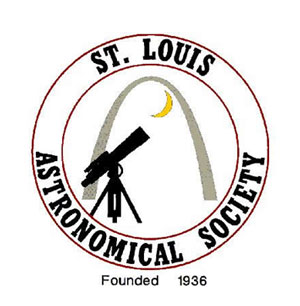SLAS Top Ten List – Here is a list of objects that you and your family will enjoy.
Northern Cross in Cygnus– The Northern Cross is a grouping of stars inside the constellation of Cygnus the Swan. This is a summer constellation that is now setting in early winter. On December 25th the Northern Cross stands upright on the northwestern horizon at 7pm.
Great Square of Pegasus – Easily visible with the unaided eye, this square pattern forms the body of the mythological winged horse. Use the four sides of the square as pointers to the east is Andromeda, to the south are Aquarius and Pisces.
Andromeda Galaxy – Located in Andromeda this massive galaxy looks like a tiny “cloud” on the northwestern side of the constellation Andromeda. Located more than 2 million light years from Earth, it is one of the most distant objects you can see with your eyes or small binoculars.
Double Cluster in Perseus- Another nice binocular object is actually two clusters each containing more than 300 super giants stars. Since it is more 7000 light years away, even these massive stars look like pin points.
Pleiades in Taurus– Looking like a tiny “little dipper” above the head of Taurus the Bull. This large cluster of bright young stars has been known since ancient times and known around the world as the “Seven Sisters” and “Subaru”
Hyades in Taurus- The head of Taurus consists of a v-shaped cluster of stars known as the Hyades. Near the east edge of this cluster is the star Aldebaran, marking the angry red eye of the Bull.
Orion Nebula – Located more than 1000 light years from Earth this is a stellar nursery where stars are still forming deep inside. The nebula is in the middle of Orion’s sword and looks like a fuzzy star. Through binoculars or small telescopes the fuzzy star grows into swarm of stars wrapped with a glowing nebula.
Betelgeuse – Located in the upper left shoulder of Orion, the red super giant star Betelgeuse is easy to spot. Betelgeuse is nearing the end of it life and should end in a supernova explosion. How soon, no one knows, but since Betelgeuse is 650 light years away, it could have already happened.
Sirius – Rising two hours after Orion, the Dog Star located Canis Major is the brightest star in the night sky. Sirius was used by the ancient Egyptians to mark the flooding of the Nile River. It now rises at 8pm on the first day of winter.
Beehive Cluster – In Cancer the Crab, lays a cluster known by names like the Beehive, or Praesepe or manger. Rising two hours after Orion, the Beehive is a small swarm of stars, best seen with binoculars. Wait until Cancer rises high in the east for the best view.
Bonus Object, Jupiter – Rising three hours after Orion, the largest planet in our solar system is currently moving slowly towards the constellation Leo the lion. With the unaided eye or binoculars you can watch Jupiter slowly move past background stars each month. With large binoculars or a small telescope you can see the disk of Jupiter, which is ten times the diameter of the Earth, and its four Galilean moons first seen in 1610.
Star Party Links
What are “star parties”? It is a term used by amateur astronomer for an event where people gather to enjoy the wonders of the night sky together. These gatherings can be held in city, suburban or rural settings. People share their knowledge and pass the time looking through one another’s telescopes and binoculars. Most “star parties” are on a local level. SLAS holds many public star parties throughout the year at municipal, state and national parks. Go to the SLAS event calendar to find out about upcoming events. If you can’t wait to experience the fun of a star party, view some of these links, to get an idea what they are all about.
Orion telescope star party (2min) http://www.youtube.com/watch?v=F9naci2KSck
Star Party Documentary (20min) http://www.youtube.com/watch?v=NdVNoK9fMbI&index=2&list=PLYgwSgXQ6sgpe5BAbHevzmVcqMddhP7ct
Illinois Dark Sky Party (3min) http://www.youtube.com/watch?v=3ThuxXRCFdY&index=24&list=PLYgwSgXQ6sgpe5BAbHevzmVcqMddhP7ct
Star Party Documentary (1hr) http://vimeo.com/10611908
Information about observing programs and the Astronomical League goes here...

